Do Animals Suffer? – a powerful gruesome image of ~ 118 years ago.
The drawing / illustration on the postcard is by William Small – artist for ‘The Daily Graphic’ – the date looks like 1897.
The original postcard is in the collection of the Ernest Bell Library. Scroll down this page for a larger 1.66 MB version.
‘Death Row’ Ships
Live animals were being shipped for slaughter in other countries. There were campaigns against these ‘cattle ships’ in the 1890s – we have original copies of related booklets & pamphlets from The Humanitarian League.
The 19thC & early 20thC vegetarians & vegans cooperated with some very fine artists to communicate their messages! Reproduced as a postcard by ‘The Vegetarian Society‘ in Manchester, UK. Posted from Manchester, England circa 1905, the date is unclear.
The early 1870s – up until WW1 – was a dynamic period for vegetarianism & animal rights activism.
-
There were 100% vegetarians / ‘vegans’ living in & around London, UK – more here.
-
Francis W. Newman had attempted to introduce ‘veganism’ in The Vegetarian Society UK in 1871 – more here.
-
Ernest Bell was ‘veganising’ his recipe books – advising about removing eggs & dairy from recipes. Henry S. Salt was writing about ‘veganism’ / 100% vegetarianism – more here.
-
The original Humanitarian League was founded in 1891 – more here.
-
Henry S. Salt had written the book ‘Animals’ Rights’ & Ernest Bell had published it in 1892 – more here.

A ship carrying sheep from Australia docked in Oman. Date 3 October 2005. Tom Jervis from UK. https://en.wikipedia.org/wiki/Livestock_carrier
Today, in 2015, there are still similar terrible ships, sailing miserably from country to country.
………………………………………………………………………………………………………
The Artist – William Small
William Small (1843-1929) was a Scot. Born in Edinburgh, on 27 May 1843, he later worked in that city as a hack-artist designing illustrations of bedsteads and gas brackets. He trained at the Royal Scottish Academy and moved to London in 1865, where he quickly established himself as a versatile painter and illustrator. In his paintings he was mainly concerned with rustic themes, and some of his later work embodies a journalistic representation of the sufferings of the poor. Painted in the social realist style of Herkomer and Bastien-Lepage, these paintings are still collected. However, he has always been principally known as an illustrator whose work bore comparison with the best of his contemporaries. – more.

The Good Samaritan by William Small Leicester Arts and Museums Service Date painted: 1899 Oil on canvas, 155.5 x 230 cm Collection: Leicester Arts and Museums Service (c) Leicester Arts and Museums Service; Supplied by The Public Catalogue Foundation http://www.bbc.co.uk/arts/yourpaintings/paintings/the-good-samaritan-80989

Lilies
Artist: William Small (1843-1929)
Engraver: The Dalziels
1866
Frontispiece, 1866 Good Words
Illustration of the following lines from “Lilies” by H. R. Haweis quoted below.
Wood engraving
6 1/2 x 4 1/2 inches
Image scan and text by Simon Cooke.
http://www.victorianweb.org/art/illustration/small/2.html
………………………………………………………………………………………………………
The Graphic / The Daily Graphic

The Graphic was founded in December, 1869 by William Luson Thomas, a wood-engraver who believed that illustrations had the power to influence public opinion on political issues. He later recalled: “The originality of the scheme consisted in establishing a weekly illustrated journal open to all artists, whatever their method, instead of confining my staff to draughtsmen on wood as had been hitherto the general custom… it was a bold idea to attempt a new journal at the price of sixpence a copy in the face of the most successful and firmly established paper in the world, costing then only fivepence.”
Thomas recruited a team of gifted artists including Luke Fildes, Hubert von Herkomer, Frederick Walker, Frank Holl, Arthur Boyd Houghton, John Millais, Frederic Leighton, Lawrence Alma-Tadema and William Small. When it was first started, the journal was produced in a rented house. However, by 1882 the company owned three buildings, twenty printing machines and employed over 1,000 people. The Christmas edition, printed in colour and costing a shilling, was particularly popular, selling over 500,000 copies in Britain and the USA. – more.
………………………………………………………………………………………………………
The Reverse of the postcard is also very interesting
Publisher
The VegSocUK – see their archives – here.
The postcards originally cost 1 & 1/2d for 6!
Just 1/4 of an old penny each.
You could buy 960 cards for £ 1.00 – …….or 635 cards for US$ 1.00.
Postcards were the ’emails’ of that period.
Postcards were also amazingly effective propaganda tools.
Just imagine – this one has survived for ~100 years & we are still inspired by it!
The date?
Illegible on the postmark.
The Edward VII 1/2d Yellow Green postage stamp was issued on 26th November 1904 & was sold until his death in 1910.
Who was the sender?
We recognise the handwriting of Albert Broadbent – he has initialled the message with – ‘A B’.
~ Albert Broadbent became the Secretary of the Vegetarian Society (Manchester) in 1895. He had already been actively involved, for at least two years, with the Vegetarian Federal Union which was attempting to bring all vegetarian societies together. He is recorded as having attended all VFU meetings from 1893, in several parts of the UK, and was present in Liverpool to see off the delegates to the International Vegetarian Congress in Chicago, in July 1893, and there again to welcome them home. ~ – more.
We like Albert!
-
Albert organising Vegetarian Summer School Holidays – here.
-
Albert discussing salads – here.
-
Albert erecting & running ‘pre-fab’ vegetarian restaurants at exhibitions – discussed here.
-
Albert working with different vegetarian organisations – touched on here.
Who was the recipient?
We are not sure whether this ‘Miss Sexton’ was the sister, or the daughter of: –
Alexander Humboldt Sexton F.I.C., F.C.S., F.R.S.E. Professor of Metallurgy in the Glasgow and West of Scotland Technical College; Past President, West of Scotland Iron and Steel Institute.
………………………………………………………………………………………………………
From the – Herald of the Golden Age – issue for July 1902 – too faded to scan succesfully – see page 80 – here.
Transcribed –
Food Reform in Paisley Food Reform was the subject of a public Meeting held under the auspices of the Scottish Society in the Town Hall, Paisley, on Thursday, June 12th. Provost Wilson occupied the chair, and he was supported on the platform by Provost Clarke, Bailie, MacGalium, Mrs. Laurie (Glasgow), Miss Sexton (Glasgow), Prof. A. Humboldt Sexton (Glasgow), Mr. Albert Broadbent (Manchester), Mr. James Meldrum (Millitsen Park), and the Rev. Charles A. Hall (Paisley). Provost Wilson said he was not a vegetarian but he had great sympathy with the movement for reforming the dietary of the people, and was pleased to preside at a meeting held in advocacy of a purer diet. He said much was heard about the evils of over-drinking, but, he thought, too little was under-stood about the evils of over-eating. The matter of proper diet did not get the care and consideration that ought to be given to it. Prof. A. Humboldt Sexton spoke of the unnecessary habit of flesh-eating. There were whole nations living without flesh-meat. Dr. Haig had demonstrated that a great many physical evils were due to flesh-eating, and, moreover, that men could not only live, but live healthier and better lives, without fish, flesh, or fowl. If people would consent to live on the rational diet, life would be prolonged and health and strength improved in every way.
………………………………………………………………………………………………………
Dr. Alexander Haig, F.E.C.P., the leading physician of one of the great London hospitals, has written :
“That it is easily possible to sustain life on the products of the vegetable kingdom needs no demonstration for physiologists, even if the majority of the human race were not constantly engaged in demonstrating it; and my researches show, not only that it is possible, but that it is infinitely preferable in every way, and produces superior powers, both of mind and body.” – quoted in – Vegetarianism and its occult meanings. – by – C. W. Leadbeater – 1913
More from the same book –
On the same subject Dr. Alexander Haig, whom we have already quoted, writes: “The effect of getting free from uric acid has been to make my bodily powers quite as great as they were fifteen years ago; I scarcely believe that even fifteen years ago I could have undertaken the exercise in which I now indulge with absolute impunity – with freedom from fatigue and distress at the time and from stiffness next day. Indeed I often say that it is impossible now to tire me, and relatively I believe this is true.” This distinguished physician became a vegetarian because, from his study of the diseases caused by the presence of uric acid in the system, he discovered that flesh-eating was the chief source of this deadly poison. Another interesting point which he mentions is that his change of diet brought about in him a distinct change of disposition – that whereas before he found himself constantly nervous and irritable, he now became much steadier and calmer and less angry; he fully realises that this is due to the change in his food.
Dr. Alexander Haig’s famous book on ‘Uric Acid’ – here.
………………………………………………………………………………………………………
A. Humboldt Sexton – more.
WORKS by Prof. HUMBOLDT SEXTON, F.I.C., F.C.S., F.R.S.E., Glasgow and West of Scotland Technical College.
OUTLINES OF QUANTITATIVE ANALYSIS. With Illustrations. THIRD EDITION. Crownn 8vo, Cloth, 3 s. “A practical work by a practical man . . . will further the attainment of accuracy and method.” — Journal of Education. ” An admirable little volume . . . well fulfils its purpose.” — Schoolmaster. “A compact laboratory guide for beginners was wanted, and the want has been well supplied. . . . A good and usef ul book. ” — Lancet.
By the same Author. OUTLINES OF QUALITATIVE ANALYSIS. With Illustrations. THIRD EDITION. Crown Svo, Cloth, 3s. 6d. ” The work of a thoroughly practical chemist . . . and one which may be unhesitatingly recommended.” — British Medical Journal. “Compiled with great care, and will supply a want.” — Journal of Education.
………………………………………………………………………………………………………
The postcard as a larger file – click to open
………………………………………………………………………………………………………
Our Projects
The Henry Salt Archive is one of our, almost completed, projects.
The Humanitarian League is our Hong Kong registered charity.
The Ernest Bell Library was conceived in 1934. It is still strong & very active eighty years later – its primary objectives are to: –
-
Collect all of Ernest Bell’s book & non-book works and make them easily accessible to everyone.
-
Collect the literature of vegetarianism and all the other humanitarian movements in which Ernest Bell was so deeply involved.
-
Assist students and scholars in their research.
-
Introduce all aspects of Ernest Bell’s life, including his writings, campaign work, influences and his circle of friends.
-
Undertake our own research into missing aspects of Ernest Bell’s life and work.
We already have more than 300 pieces of Ernest Bell’s own writings.
We are also actively building a collection of examples of promotional material, campaign material, fundraising & marketing activities etc. – related to: –
-
veg(etari)an products.
-
veg(etari)an books & other publications.
-
veg(etari)an organisations.
-
veg(etari)an businesses.
-
animal rights organisations.
-
animal rights publications.
-
humanitarian organisations.
-
humanitarian publications.
-
rambling clubs run by members of the above groups & related publications.
-
the work of Richard St. Barbe Baker & the ‘Men of the Trees’ organization & its many sub-branches.


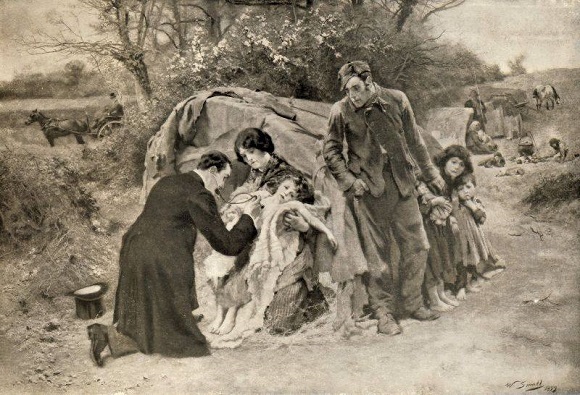










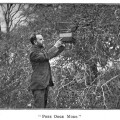
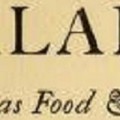
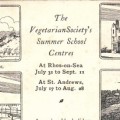
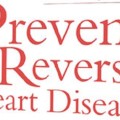
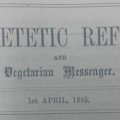
No Comments